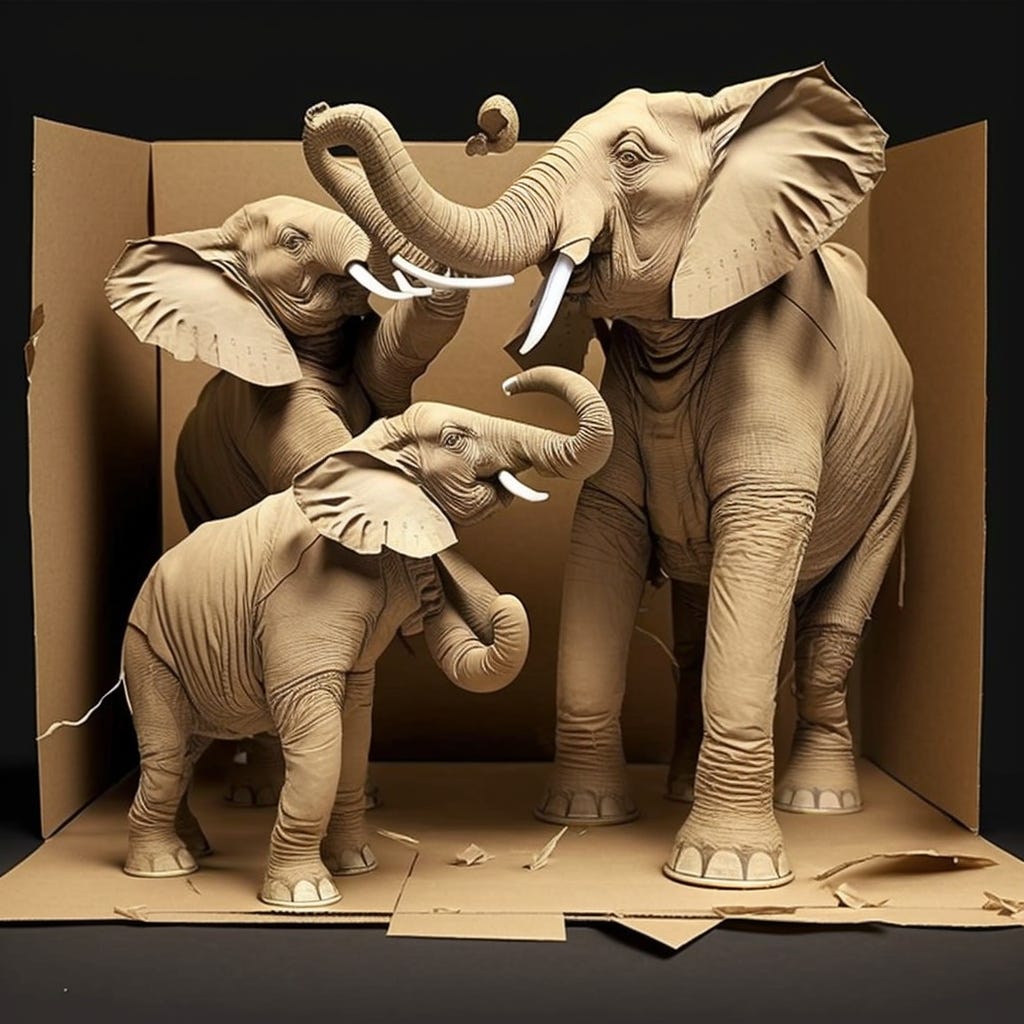We all live complex lives in the first quarter of the 21st century. Even those of us who think of our lives as normal, mundane…even boring.
When you stop to think about the hundreds of decisions you make daily…what to wear, which peanut butter to buy, what to watch…it can all look pretty overwhelming.
That’s why we “outsource” so many of those decisions to The Elephant. The Elephant is a metaphorical aspect of our psyches that automatically “keeps the trains running on time” so that its partner, The Rider, can focus on the small part of the world that captures its attention at the moment. We’ve been thinking about The Elephant recently as a way to help us understand the way the world presents itself to us in a relatively organized fashion. As adults, we do not experience a world of what the great American psychologist William James called the newborn’s “blooming and buzzing confusion,” but rather one that presents itself to us as already coherent and meaningful.
The meaning of things is available to us almost instantly as we go through our day. That meaning is guided by The Elephant’s unwavering focus on life’s two fundamental requirements: survival and reproduction. All living organisms strive/struggle to fulfill these needs. Think of them as our organism’s “jobs.” Over the long course of Homo sapiens’ history, those two jobs have remained steadfastly the same. Survival has always meant beware of dangers that might lead to your demise. Reproduction’s also been straightforward: propagate.
But as our species became increasingly complex and hypersocial (all us are interconnected with, and totally dependent upon others of us), the ways we successfully perform these jobs has changed. That means that “survival” in the 21st century is not only about acquiring the necessary calories to power our bodies and to avoid getting hit by cars, it also means succeeding at modern life’s social and emotional “requirements”. Phrases like, “it’s dog-eat-dog out there” aren’t literally about canines, but about the “battle” for survival in the social and emotional contexts we have created over millennia. No matter how cooperative our environments may be, The Elephant is always on the lookout for physical threats, but also ways that our social and emotional survival are in jeopardy.
Likewise, “reproduction” is no longer simply about progeny. Today, we also “reproduce” through the propagation of ideas and behaviors…memes…as well as through DNA. What are “influencers” if not people who’ve created materials that have been adopted…imitated…by others?
We, and our modern Elephants, arrive in the 21st century in a cultural context that includes these expanded requirements for survival and reproduction. That means that The Elephant is ever-vigilant (unconsciously, without The Rider needing to expend any of its precious processing bits) for situations that threaten its success at either one.
A new arrival at the office? The Elephant automatically assesses their threat to its status: its chances of continued “survival.” Latest YouTube video getting lots of Likes (i.e., “reproducing”)? The Elephant notes the positive reinforcement and develops unconscious “hypotheses” about the reasons for video’s success (“did that lighting make me look thinner?”) in its attempt to make the next one more influential; more likely to enhance its reputation.
Survival and reproduction, in both their original meanings and in their modern expressions, are dual driving forces of our lives. Even the top levels of Maslow’s hierarchy are deeply connected to them.
If you watch closely, you can see your Elephant going about the business of succeeding at both within your everyday world. Fulfilling those two needs is a function of our species’ genetic heritage and our local cultural context: The Elephant’s Nature and Nurture.
More about those two shaping forces next time.



